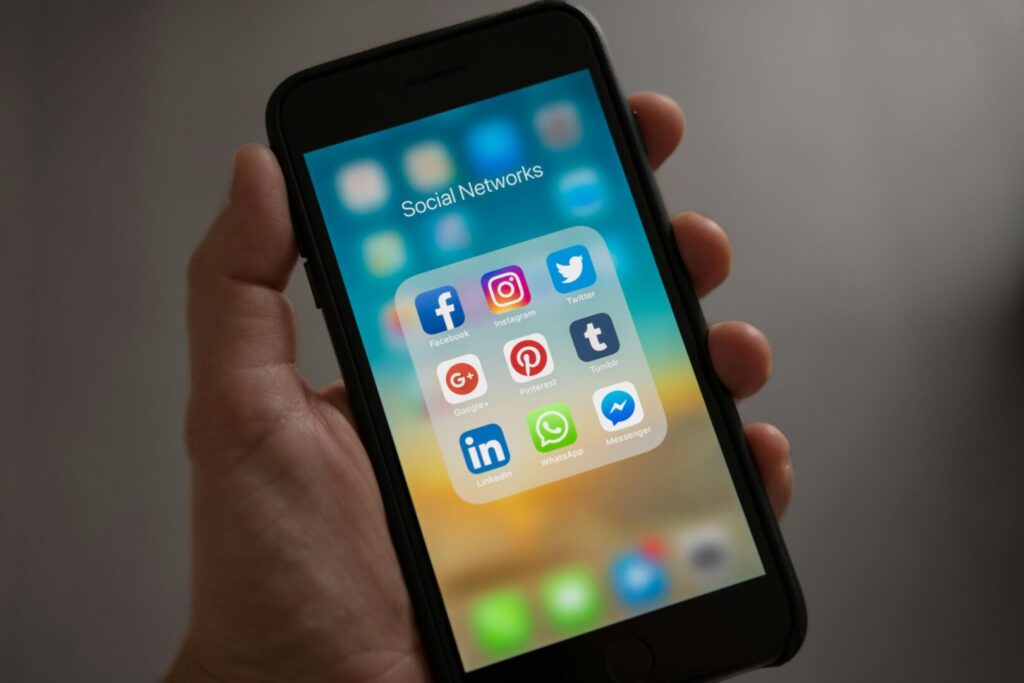Introduction to pinterest
Imagine turning your Pinterest obsession into a money-making machine. Sounds too good to be true? Think again! Pinterest isn’t just a platform for planning dream weddings or finding mouthwatering recipes; it’s a goldmine of opportunities for savvy entrepreneurs and content creators.
But here’s the problem: Most people are completely unaware of Pinterest’s income-generating potential. They scroll endlessly, pinning and repinning, without realizing they’re sitting on a treasure trove of monetization possibilities. Don’t let that be you! It’s time to transform your casual pinning habit into a strategic, income-producing endeavor.

Understanding Pinterest’s Potential
The power of visual content
Visual content reigns supreme on Pinterest, making it a powerful platform for businesses and content creators. Users are drawn to eye-catching images and infographics, which can lead to higher engagement rates and increased conversions. Here’s why visual content is so effective on Pinterest:
- Grabs attention quickly
- Conveys information efficiently
- Encourages sharing and saving
- Stimulates emotional connections
How Pinterest differs from other social platforms
Pinterest stands out from other social media platforms due to its unique features and user behavior. Unlike platforms focused on real-time updates, Pinterest acts as a visual search engine and idea catalogue.
| Feature | Other Social Platforms | |
| Content Lifespan | Long-lasting | Short-lived |
| User Intent | Discovery and planning | Social interaction |
| Content Type | Primarily visual | Mixed media |
| Search Function | Advanced visual search | Basic keyword search |

Pinterest’s user demographics
Understanding Pinterest’s user demographics is crucial for tailoring your content and marketing strategies. Here’s a breakdown of key demographic information:
- Gender: Predominantly female users (about 60-70%)
- Age: Large presence of millennials and Gen X (25-54 years old)
- Location: Strong user base in the US, with growing international adoption
- Interests: Home decor, DIY, fashion, food, travel, and wellness
By leveraging these demographics and Pinterest’s unique features, businesses can tap into a highly engaged audience actively seeking inspiration and products. This potential for targeted reach and conversion makes Pinterest an invaluable platform for various industries and content creators
Setting Up Your Pinterest Business Account

Now that we understand Pinterest’s potential, let’s dive into setting up your Pinterest business account. This crucial step will lay the foundation for your success on the platform.
Designing an eye-catching profile
Your Pinterest profile is your digital storefront, so it’s essential to make a great first impression. Here are some key elements to focus on:
- Profile picture: Use a high-quality, professional headshot or your brand logo
- Cover image: Showcase your best pins or create a custom banner that represents your brand
- Bio: Write a concise, engaging description of your business (160 characters max)
Optimizing your account settings
To maximize your reach and engagement, optimize these important account settings:
- Claim your website
- Enable Rich Pins
- Set up your Pinterest tag for tracking
- Connect your other social media accounts
Creating a business profile
Transform your personal account into a business account or create a new one from scratch. Here’s a comparison of personal vs. business accounts:
| Feature | Personal Account | Business Account |
| Analytics | Limited | Comprehensive |
| Advertising | Not available | Available |
| Rich Pins | Not available | Available |
| Profile type | Limited | Customizable |
To create a business profile:
- Go to pinterest.com/business/create/
- Fill in your business details
- Choose your business type and focus
- Connect your website and other platforms
By carefully setting up your Pinterest business account, you’ll be well-positioned to start crafting high-quality pins and building your presence on the platform. Next, we’ll explore the art of creating engaging pins that capture users’ attention and drive traffic to your content.

Crafting High-Quality Pins
Creating high-quality pins is essential for success on Pinterest. Let’s explore the key elements that make pins stand out and drive engagement.
A. Creating Rich Pins
Rich Pins are a powerful tool that automatically sync information from your website to your pins. They come in four types:
- Product Pins
- Recipe Pins
- Article Pins
- App Pins
| Rich Pin Type | Benefits |
| Product Pins | Display real-time pricing, availability, and where to buy |
| Recipe Pins | Show ingredients, cooking times, and serving information |
| Article Pins | Include headline, author, and story description |
| App Pins | Show an install button for direct app downloads |
To enable Rich Pins, you’ll need to add metadata to your website and apply for approval from Pinterest.
B. Using keywords effectively
Incorporating relevant keywords in your pins is crucial for discoverability. Consider these tips:
- Research popular keywords in your niche
- Include keywords naturally in your pin titles and descriptions
- Use long-tail keywords for more specific targeting
C. Writing compelling descriptions
Your pin descriptions should entice users to click and engage. Here’s how to make them compelling:
- Keep descriptions concise (around 100-200 characters)
- Include a clear call-to-action (CTA)
- Use power words to evoke emotion
- Incorporate relevant hashtags (limit to 2-3)
D. Choosing attention-grabbing images
Visual appeal is paramount on Pinterest. To create eye-catching pins:
- Use high-quality, vertical images (2:3 aspect ratio)
- Incorporate bold, contrasting colors
- Add text overlays to provide context
- Use lifestyle images that showcase your product or content in action
By focusing on these elements, you’ll create pins that not only look great but also perform well in Pinterest’s algorithm. Next, we’ll explore how to build a strategic pinning schedule to maximize your reach and engagement.
Building a Strategic Pinning Schedule
Creating a well-structured pinning schedule is crucial for maximizing your Pinterest success. By implementing a strategic approach, you can increase engagement, grow your audience, and ultimately boost your chances of making money on the platform.
A. Maintaining a consistent posting frequency
Consistency is key when it comes to Pinterest. Aim to pin regularly, ideally multiple times a day, to keep your content fresh and visible to your audience. Here’s a recommended pinning frequency:
- Daily: 5-10 pins
- Weekly: 35-70 pins
- Monthly: 150-300 pins
Remember, quality should always take precedence over quantity. It’s better to pin fewer high-quality pins than to flood your account with low-quality content.
B. Using scheduling tools
To maintain a consistent pinning schedule without spending hours on the platform every day, leverage scheduling tools. Here are some popular options:
| Tool | Features | Pricing |
| Tailwind | AI-powered scheduling, analytics, and content creation | Starts at $9.99/month |
| Later | Visual planning, analytics, and multi-platform support | Free plan available, paid plans start at $8/month |
| Hootsuite | Comprehensive social media management, including Pinterest | Starts at $49/month |
These tools allow you to batch-create and schedule your pins in advance, saving you time and ensuring a steady stream of content.
C. Determining the best times to pin
While there’s no one-size-fits-all approach to timing your pins, certain periods tend to see higher engagement:
- Evenings: 8 PM – 11 PM
- Weekends: Saturday mornings and Sunday evenings
- Seasonal periods: Holidays and special events relevant to your niche
To fine-tune your pinning schedule, analyze your Pinterest analytics to identify when your specific audience is most active. Experiment with different posting times and track your results to optimize your strategy.
Now that you have a solid pinning schedule in place, it’s time to focus on optimizing your pins for Pinterest’s search engine to increase visibility and reach.
Monetizing Your Pinterest Presence
Now that you’ve established a strong Pinterest presence, it’s time to turn your efforts into income. Let’s explore three effective strategies for monetizing your Pinterest account.
A. Collaborating with brands for sponsored content
Partnering with brands can be a lucrative way to monetize your Pinterest presence. Here’s how to get started:
- Build a strong, engaged audience
- Create a media kit showcasing your Pinterest stats
- Reach out to relevant brands or join influencer networks
- Negotiate fair rates for sponsored pins or boards
| Pros | Cons |
| Direct income from brands | Requires significant following |
| Exposure to new audiences | Must maintain authenticity |
| Potential for long-term partnerships | Time-consuming negotiations |
B. Promoting your own products or services
Leveraging Pinterest to showcase your own offerings can drive sales and boost your business:
- Create eye-catching pins featuring your products or services
- Use rich pins to provide real-time pricing and availability
- Develop themed boards that complement your offerings
- Utilize Pinterest’s shopping features for seamless purchasing
C. Affiliate marketing on Pinterest
Affiliate marketing allows you to earn commissions by promoting other companies’ products:
- Join reputable affiliate programs
- Create compelling pins featuring affiliate products
- Disclose affiliate relationships in your pin descriptions
- Track performance and focus on high-converting products
Remember to always follow Pinterest’s guidelines for sponsored and affiliate content to maintain trust with your audience and comply with platform policies.
With these monetization strategies in place, you’re well on your way to turning your Pinterest presence into a profitable venture. Next, we’ll explore how to drive even more traffic to your website using Pinterest’s powerful features.
Conclusion
Pinterest offers numerous opportunities for individuals and businesses to generate income by leveraging its visual appeal and strong user engagement. By using strategies like affiliate marketing, selling products or services, creating sponsored content, driving traffic to blogs or websites, and utilizing Pinterest ads, you can effectively monetize your presence on the platform. The key to success lies in understanding your target audience, creating compelling and visually appealing content, and consistently engaging with followers. With the right approach, Pinterest can become a powerful tool for building a brand and generating a steady stream of revenue.

